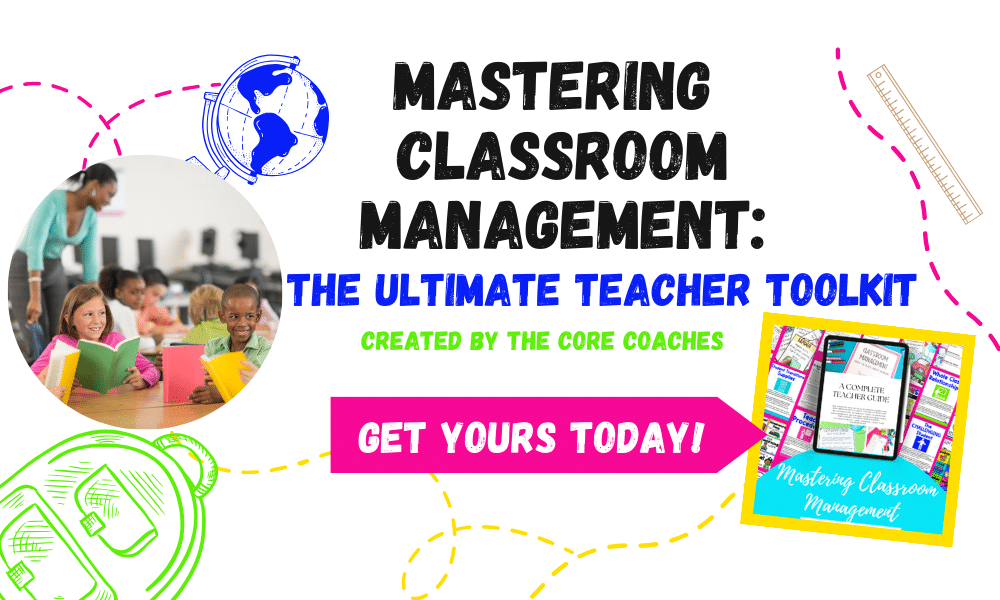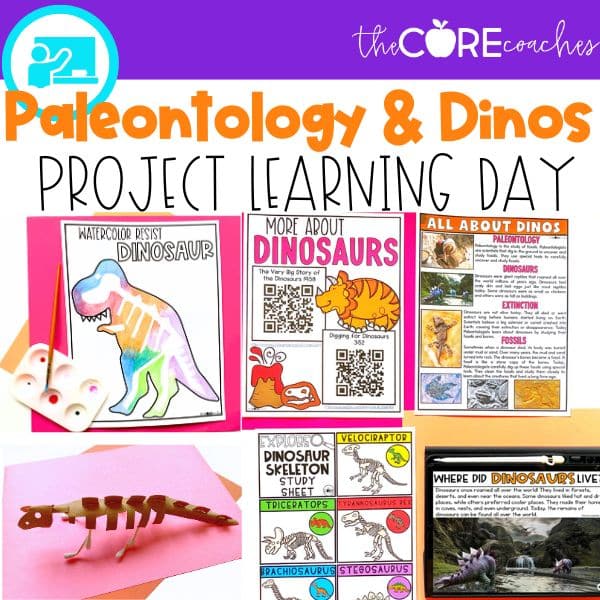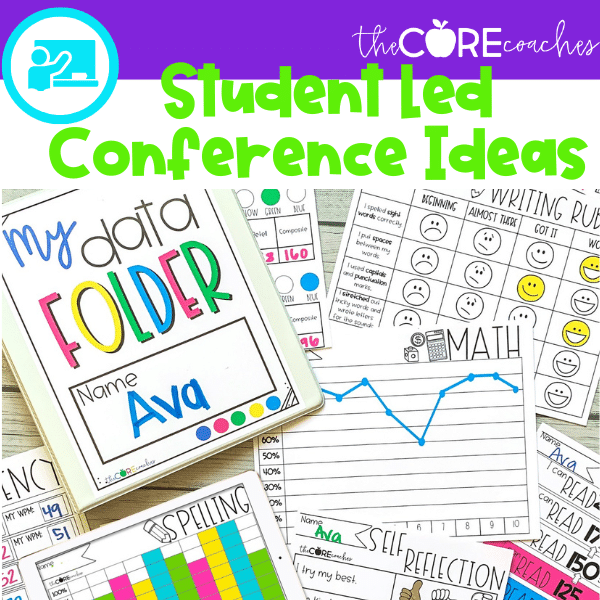Whether you are a veteran teacher or brand new to the classroom, the topic of student engagement is one that you will most likely visit at least once a year. Why? Well, for a few reasons.
We will share those reasons with you in just a bit but first, let’s start at the beginning. What is student engagement?
Define Student engagement
While may already have a strong understanding of what student engagement is, we always like to do a quick definition. This is great as an introduction for new teachers or as a review for those of you with years of classroom experience.
Regardless of how long you have been in the classroom, we hope this little overview will help get a better understanding of how to determine if your students are engaged. Then, when we share some of our tried and true strategies you will know which ones are best suited for your kids.
Student engagement goes beyond students simply coming to school each day and sitting quietly in their seats. While a quiet student who does not disrupt the classroom may seem like an engaged student – that is not always the case.
A quiet student may be just that, quiet. They may not distract other students from learning, but how do you know if they are engaged with the material?
When thinking about how to determine if a student is engaged consider the level of enthusiasm, interest, and active participation that is displayed by students in their learning journey! For example, are they
asking questions, are they actively participating in group work, and are they excited about the content?
These are just a few examples of how you can determine if a student is engaged. Overall, can you SEE them learning?
When you can see the learning taking place then you can bet you have the students engaged!
Why is Student engagement important?
At the beginning, we mentioned a few reasons about why student engagement will be a regular part of your teaching career. Those reasons are directly tied to why student engagement is important. So, let’s take a look at what those reasons are and why they are important.
The primary reason that it is important to focus on student engagement every year is that student engagement is directly linked to learning. Without student engagement, it is not possible for effective learning to occur.
Moreover, a lack of engagement from one student not only impacts their learning but may also impact the earning of their peers. If you have been a teacher for as little as a month then you already know the impact that one student can have on the entire classroom!
The power of one single student is another reason that understanding student engagement is so important. Not every student is the same!
Therefore, you may need to use different strategies each year or even at different times throughout the year. This is why it is helpful to revisit student engagement strategies frequently.
By staying up to date on new engagement strategies as well as revisiting the oldies (that are still goodies!) you continue to build your toolbox. An extensive toolbox of student engagement strategies gives you plenty to pull from to support the ever-changing dynamics of your classroom.
The more you are able to adapt to the different dynamics of each group of students the better you are able to keep students engaged and help them learn.
activities to engage students
As we said above, we want you to have an extensive tool kit of engagement activities and strategies. So, while we are going to share some of our favorites below do not feel like you have to get rid of what you already have in your toolbox. Simply add to it!
Hands-on learning
The more that students can be physically active in their learning, the better. Types of activities that support hands-on learning are science experiments, art projects, or group discussions that encourage students to explore, create, and discover concepts on their own.
While digital learning can include hands-on learning, this is a great way to balance technology by using more traditional activities like printables. Printable learning activities where kids are cutting and gluing provide not only hands on opportunities but a variety of learning activities.
Many of our learning resources come with both a digital and printable option! Therefore, you always have the choice to use what is most engaging for your students.
movement and brain breaks
As we mentioned learning doesn’t always have to be active but there should be some movement in your classroom every day to help kids stay engaged. This can be as simple as having kids move between learning centers or more involved with brain breaks.
Brain breaks are one of the best ways to re-engage students by giving their brains time to reset. While many brain breaks involve physical activities and movement they don’t have to.
You can do a quick 5 minute game with students seated at their desks, stretching at their desks, or a seated meditation or breathing exercise. In the same way, we suggest having plenty of engagement strategies in your tool kit, we encourage you to have a handful of brain break activities to choose from.
Authentic connections
Helping students make personal connections to what they are learning in the classroom and what they experience at home is an excellent engagement strategy. More than that, it is an essential learning tool.
The more that students can see how the lessons move beyond the walls of the school the more likely they are to not only see the importance of school but how to apply it to their own lives. In addition, making personal connections helps with long-term comprehension.
Our STEM projects are designed specifically to help students make these real world connections. Beyond STEM, other ways you can help kids make authentic connections is to Invite guest speakers, take field trips, or engage students in community service projects.
interactive technology
Yes, technology can be a tricky subject because some technology is not engaging! Even in first and second grade, we are seeing students be more and more distracted by phones, laptops, and other tech devices.
However, because kids are so familiar with technology you use it to your advantage. With the right kind of interactive technology, you can engage students in learning by using a medium they enjoy.
An example of an interactive learning activity that can increase engagement is our Learning Quests. In addition, including an interactive tool like Nearpod, Flipgrid, Padlet, or interactive whiteboards with any lesson can help encourage student participation.
gamification
Turning learning into a game by using points, rewards, and challenges is a classic way to increase student engagement. You can do this with something as extensive as creating educational board games or something more simple like a classroom competition.
In addition, you can even make a more formal activity like a quiz seem like a game by adding in an interactive technology element and making it a digital quiz. Most of our learning activities, like our read alouds, already have digital quizzes included.
Other game-like activities can be found in our Classroom Management Course. Throughout the course, we address student engagement in detail, along with other key elements of Classroom Management, and provide dozens of ready to use resources.
cultivate creativity
Encourage students to think creatively and express their ideas through various mediums. Incorporate arts, music, drama, or storytelling into lessons to engage different learning styles and promote self-expression.
One of the best ways we have found to do this is to include re-telling puppets in our read alouds. These puppets not only provide kids with a creative outlet while making them but also allows students the chance to be creative in retelling the story while using the puppets.
positive reinforcement
Celebrate student achievements and effort. Use praise, rewards, and recognition to motivate students and create a positive and supportive learning environment. An excellent way to create continuous positive reinforcement is by teaching students a growth mindset.
Here are some of our favorite growth mindset activities. They are perfect for starting the year with a positive attitude or as needed throughout the year.
cooperative learning
We know that group work can often feel overwhelming and chaotic. However, if practiced regularly with students it can be one of the best ways to get engagement.
One way to help manage groups and make learning effective and engaging is to assign roles and responsibilities. This promotes a sense of shared ownership and encourages students to learn from and support one another.
At the forefront of effective group learning is effective classroom management. In our Classroom Management Course we not only discuss how cooperative learning can help with classroom management, through student engagement, but we provide you with tools and resources to help you get started.
differentiated instruction
Differentiated instruction is not a new term for teachers. However, it is not always directly discussed in terms of student engagement.
However, part of student engagement is making sure that students are understanding the content! When students do not understand the content they are not only likely to stop engaging in learning, but may also start distracting others from learning.
While it may take some additional planning, the more you can offer various learning options, the better your engagement may be. One example would be to allow students who are better auditory learners to use the re-telling puppets in a read aloud to summarize the events instead of writing a summary.
project-based learning
Project based learning allows students to dive deep into a topic and apply what they’ve learned. It involves critical thinking and problem-solving as students work on real-world projects and presentations. In addition, it often includes cooperative learning as well.
Our favorite project based learning resources for first and second grade students are Learning Quests and STEM projects. Both of these projects include the key elements of inquiry and keep students engaged.
the best strategies for student engagement
While all of the strategies listed above have been tried and tested as effective in the classroom, every classroom is different. Therefore, the best strategies will vary from classroom to classroom and year to year.
The key thing is to create a classroom environment where students feel valued, challenged, and excited about learning. Which in turn, leads to regular engagement. To accomplish this, you will need to use a variety of strategies based on the needs of your students.
Not only that, but you will most likely want to use a combination of strategies. The combination of strategies that get your students engaged are YOUR best strategies!
-

Smiley Shark PREK Book Companion and Friendship Activities
$4.50 Add to cart -

The Snow Thief Book Companion-Winter Read Aloud Activities
$4.50 Add to cart -

The Snow Thief PREK Book Companion-Winter Read Aloud Activities
$4.50 Add to cart -

Twas the Night Before PREK Thanksgiving Read Aloud, Craft & Writing
$4.50 Add to cart -

Twas the Night Before Thanksgiving Read Aloud, Thanksgiving Craft & Writing
$4.50 Add to cart -

Snowmen at Night Book Companion-Winter Snow Activities
$4.50 Add to cart






